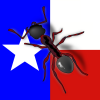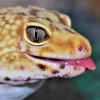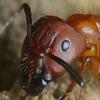It depends -- various Pheidole, Crematogaster laevisucula, various Camponotus, and Solenopsis (both S. invicta and S. geminata) are all really common and fairly dominant around here. In more open areas, its the Pheidole or Solenopsis. More wooded areas have the Crematogaster and Camponotus.
Under a mile from here, it is virtually only Solenopsis invicta.
It seems like the dominant species are pretty much dependent on how disturbed the area is and how open it is.
Of course, those aren't the only ants you see (unless you are in one of the areas that is entirely dominated by RIFA). There are lots of other species and genera, but they aren't dominant. For instance, Leptogenys elongata, Pachycondyla harpax, Cyphomyrmex sp., Monomorium sp., Pseudomyrmex sp., and many others are seen occasionally.
I actually see a fair amount of Leptogenys -- they're still fairly common, even in disturbed areas, as they prey on isopods -- even the Armadillium sp. that are very common in disturbed areas. They're also big and conspicuous.
There are lots of species around here (Travis CO has many species and the fauna has been studied very well), especially in areas that haven't been completely torn up (like the Barton Creek greenbelt or Wild Basin). Lots of the suburbs and the center of the city are pretty much only RIFA though.
This is Austin, TX.
Edited by cpman, June 27 2017 - 1:34 PM.






















